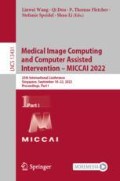Abstract
Modeling and characterizing functional brain networks from task-based functional magnetic resonance imaging (fMRI) data has been a popular topic in neuroimaging community. Recently, deep belief network (DBN) has shown great advantages in modeling the hierarchical and complex task functional brain networks (FBNs). However, due to the unsupervised nature, traditional DBN algorithms may be limited in fully utilizing the prior knowledge from the task design. In addition, the FBNs extracted from different DBN layers do not have correspondences, which makes the hierarchical analysis of FBNs a challenging problem. In this paper, we propose a novel prior knowledge guided DBN (PKG-DBN) to overcome the above limitations when conducting hierarchical task FBNs analysis. Specifically, we enforce part of the time courses learnt from DBN to be task-related (in either positive or negative way) and the rest to be linear combinations of task-related components. By incorporating such constraints in the learning process, our method can simultaneously leverage the advantages of data-driven approaches and the prior knowledge of task design. Our experiment results on HCP task fMRI data showed that the proposed PKG-DBN can not only successfully identify meaningful hierarchical task FBNs with correspondence comparing to traditional DBN models, but also converge significantly faster than traditional DBN models.
Access this chapter
Tax calculation will be finalised at checkout
Purchases are for personal use only
References
Just, M.A., et al.: Functional and anatomical cortical underconnectivity in autism: evidence from an FMRI study of an executive function task and corpus callosum morphometry. 17(4), 951–961 (2007)
Logothetis, N. K. J. N. (2008). “What we can do and what we cannot do with fMRI.“ 453(7197): 869–878
Friston, K.J.J.S.: Modalities, modes, and models in functional neuroimaging. 326(5951), 399–403 (2009)
Barch, D.M., et al.: Function in the human connectome: task-fMRI and individual differences in behavior. Neuroimage 80, 169–189 (2013)
Lv, J., et al.: Holistic atlases of functional networks and interactions reveal reciprocal organizational architecture of cortical function. 62(4), 1120–1131 (2014)
Cheng, H.-J., et al.: Task-related brain functional network reconfigurations relate to motor recovery in chronic subcortical stroke. 11(1), 1–12 (2021)
Kucyi, A., et al. (2021). Prediction of stimulus-independent and task-unrelated thought from functional brain networks. 12(1), 1–17
Friston, K.J., et al.: Statistical parametric maps in functional imaging: a general linear approach. 2(4), 189–210 (1994)
Friston, K.J., et al.: Event-related fMRI: characterizing differential responses. 7(1), 30–40 (1998)
Beckmann, C.F., et al.: General multilevel linear modeling for group analysis in FMRI. 20(2), 1052–1063 (2003)
Poline, J.-B., Brett, M.J.N.: The general linear model and fMRI: does love last forever? 62(2), 871–880 (2012)
Eklund, A., et al.: A Bayesian heteroscedastic GLM with application to fMRI data with motion spikes. 155, 354–369 (2017)
De Martino, F., et al.: Combining multivariate voxel selection and support vector machines for mapping and classification of fMRI spatial patterns. 43(1), 44–58 (2008)
Song, S., et al.: Comparative study of SVM methods combined with voxel selection for object category classification on fMRI data. 6(2), e17191 (2011)
Calhoun, V.D., et al.: ICA of functional MRI data: an overview. In: Proceedings of the International Workshop on Independent Component Analysis and Blind Signal Separation, Citeseer (2003)
Calhoun, V.D., et al.: A review of group ICA for fMRI data and ICA for joint inference of imaging, genetic, and ERP data. 45(1), S163-S172 (2009)
Lee, K., et al.: A data-driven sparse GLM for fMRI analysis using sparse dictionary learning with MDL criterion. 30(5), 1076–1089 (2010)
Lv, J., et al.: Sparse representation of whole-brain fMRI signals for identification of functional networks. 20(1), 112–134 (2015)
Dong, Q., et al.: Modeling Hierarchical Brain Networks via Volumetric Sparse Deep Belief Network (VS-DBN). IEEE Transactions on Biomedical Engineering (2019)
Zhang, W., et al.: Hierarchical organization of functional brain networks revealed by hybrid spatiotemporal deep learning. 10(2), 72–82 (2020)
Zhang, S., et al.: Discovering hierarchical common brain networks via multimodal deep belief network. 54, 238–252 (2019)
Hu, X., et al.: Latent source mining in FMRI via restricted Boltzmann machine. Hum. Brain Mapp. 39(6), 2368–2380 (2018)
Acknowledgements
This work was supported in part by the National Key R&D Program of China under Grant 2020AAA0105702; the National Natural Science Foundation of China under Grant 82060336, 62136004, 62036011, U1801265, 6202781, Guangdong Basic and Applied Basic Research Foundation (2214050008706), Science and Technology Support Project of Guizhou Province under Grant [2021]432, and Guangdong Key Laboratory for Biomedical Measurements and Ultrasound Imaging, Health Science Center, School of Biomedical Engineering, Shenzhen University, Shenzhen 518060, China.
Author information
Authors and Affiliations
Corresponding author
Editor information
Editors and Affiliations
Rights and permissions
Copyright information
© 2022 The Author(s), under exclusive license to Springer Nature Switzerland AG
About this paper
Cite this paper
Pang, T., Zhu, D., Liu, T., Han, J., Zhao, S. (2022). Hierarchical Brain Networks Decomposition via Prior Knowledge Guided Deep Belief Network. In: Wang, L., Dou, Q., Fletcher, P.T., Speidel, S., Li, S. (eds) Medical Image Computing and Computer Assisted Intervention – MICCAI 2022. MICCAI 2022. Lecture Notes in Computer Science, vol 13431. Springer, Cham. https://doi.org/10.1007/978-3-031-16431-6_24
Download citation
DOI: https://doi.org/10.1007/978-3-031-16431-6_24
Published:
Publisher Name: Springer, Cham
Print ISBN: 978-3-031-16430-9
Online ISBN: 978-3-031-16431-6
eBook Packages: Computer ScienceComputer Science (R0)


